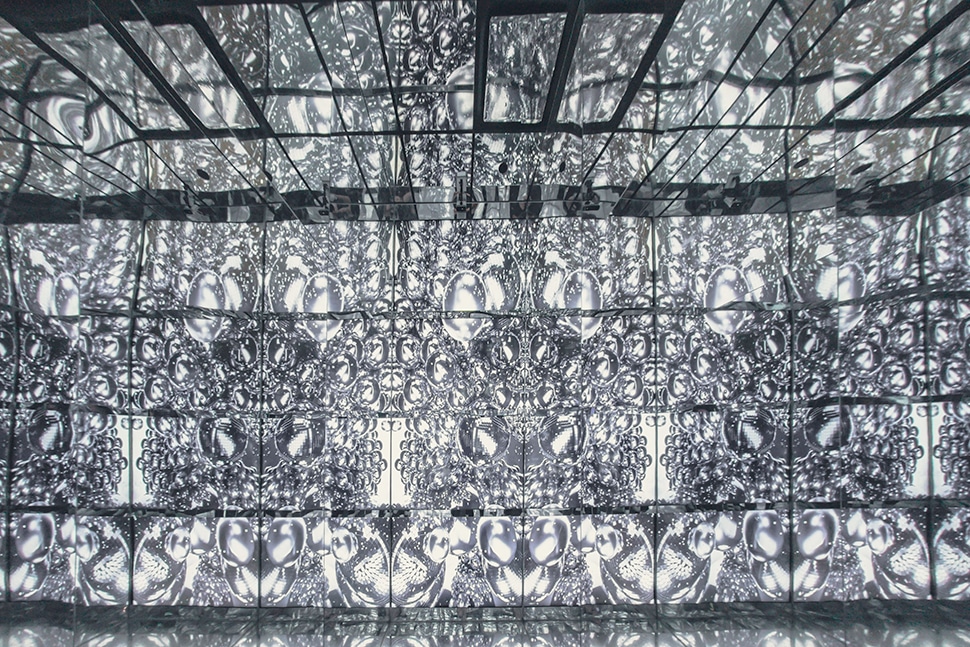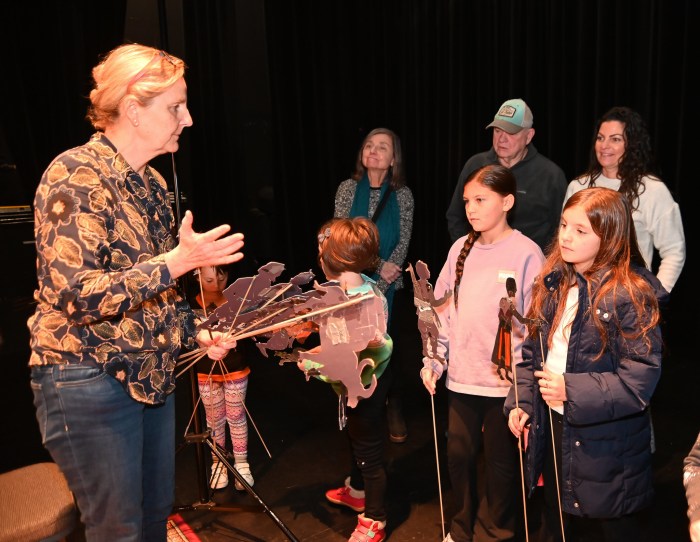Art, such as sculptures and paintings, has always been viewed and appreciated in galleries or museums. Today, viewers are not just looking at the art but are being a part of the art.
Immersive experiences can vary in the medium. However, some of the most popular are digital art projected all around the viewer. They also vary in theme, as some take on the classic art of Vincent van Gogh or Claude Monet. Others, such as New York City art center INTER_, encourage interacting with the art.
“We have a digital projection show and a big dome and, unlike other places where you’d just sit on the floor and watch it, we actually have tracking technology so that you can interact with the show,” explained Ryan Nelson, the co-founder of INTER_. “The walls react to your presence, and you’re basically helping to shape the show that everybody else is seeing.”
INTER_ Creative Director Stanton Jones, who has been working with interactive and immersive art experiences since 2017, explained that creating an INTER_ exhibit involves meticulous planning and innovative technology.
“I collaborate with our broader team to help develop and fine-tune the concept, which is then brought to light by technologists, artists, fabricators,” Jones said. “For example, INTER_ is currently partnering with some weavers to create an immersive net that incorporates a sacred geometry pattern in the netting and a hanging light garden underneath. So this upcoming exhibit will be one of a kind and bring the interactive nature of INTER_ to the next level.”
The mission of INTER_, Jones said, is to spark joy and interconnection through “INTERmersive,” or immersive, experiences.
At ARTECHOUSE NYC, Afrocentricity and Afrofuterism are explored in their latest exhibit.
The exhibition, according to ARTECHOUSE NYC’s press release, features the work of London-based Afro-surrealist digital artist Vince Fraser along with evocative poetry by Ursula Rucker. It aims to honor the legacy, struggles, and complexities of the Black experience with creativity, courage, and imagination.
The centerpiece of the exhibition, Vision of the Black Experience, features seamless megapixel count projections with Hyperreal sound technology in a four-part journey. The exhibition also includes interactive auxiliary galleries exploring themes of rebirth, community and spiritual connection.
Josh Feldman, ARTECHOUSE’s director of marketing and sales, explained that the exhibits are really cinematic experiences.
“The stories that we’re telling have an arc to it, but it’s a non-linear story because you’re encouraged to go into the side galleries or explore an interactive installation or get a drink at the bar and zig and zag between the experience,” Feldman said, later adding “In addition to that storytelling element, we hope that we’re educating, inspiring and empowering visitors of all ages, that this is the future of creativity.”
Many viewers enjoy using the immersive exhibits as a backdrop for photos they take of themselves, in a sense becoming the art.
“I think the movement primarily stems from the rise of social media,” Jones said. “It kind of parallels that and the desire to share aesthetically pleasing photos within dynamic, conceptual environments.”
Jones continued to explain that the trend of taking photos in these types of environments can be seen worldwide.
“There are projections on the wall, to more tactile, interactive engagements,” Jones said.
It could also be the case that some people are searching for new experiences after COVID shutdowns.
“Coming out of COVID we saw it was even more important to give people a reason to try to come together and really foster a sense of INTERconnection, and to be a place where we can spark a little joy in people’s lives,” Nelson said.
Feldman explained that the ARTECHOUSE team wants guests to be exposed to 21st-century tools like artificial intelligence.
“We want to send visitors off to far-off places,” Feldman said. “Visitors are looking for what’s next.”
Immersive experiences increase in popularity

(Photo courtesy INTER_)




























